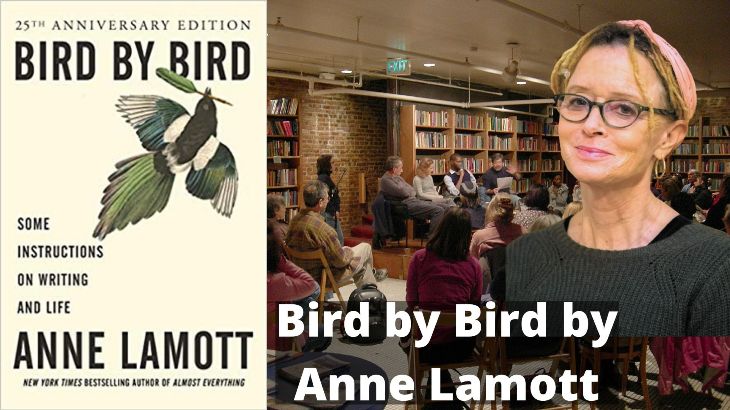I have read so far three books on writing:

- The Art of War by Steven Pressfield
- On Writing: A Memoir of the Craft By Stephen King, and now
- Bird by Bird by Anne Lamott
All three of them I recommend highly and all of them continue to contribute to my desire to become a better writer.
I can say that the main message of every writing book is that:
- You have to love the craft or writing
- Writing is about reading, listening, and being ready to produce many crappy first draft
- It’s a dicipline that you have to maintain over time
Why is it called Bird by Bird
Thirty years ago my older brother, who was ten years old at the time, was trying to get a report on birds written that he’d had three months to write. It was due the next day. We were out at our family cabin in Bolinas, and he was at the kitchen table close to tears, surrounded by binder paper and pencils and unopened books on birds, immobilized by the hugeness of the task ahead. Then my father sat down beside him, put his arm around my brother’s shoulder, and said, ‘Bird by bird, buddy. Just take it bird by bird.’”
Anne Lamott

For anyone who writes or wants to write, she makes it clear that there is only one choice available — commitment to the process itself. “The real payoff is the writing itself, that a day when you have gotten your work done is a good day, that total dedication is the point.”
The book is written in a seminar-style where Anne Lamott is teaching a class about writing, what to expect and to expect of the craft. She wants her would-be writers conscious and offers a credible set of instructions to these fully awake minds. This is mainly because her instructions aren’t instructions at all. They’re stories, anecdotes, reminiscences, funny and sad jokes, shared experiences — in short, good writing about writing, object lessons in the craft and art, by a tough-minded veteran.
She gets the bad news (and there’s much of it) out of the way first. Unflinching, she examines motivation, stamina, neurosis: “You try to sit down at approximately the same time every day. This is how you train your unconscious to kick in for you creatively. . . . You put a piece of paper in the typewriter, or you turn on your computer and bring up the right file. . . . You begin rocking, just a little at first, and then like a huge autistic child.”
Writing, she makes clear, is not for the fainthearted, the easily bored, the fame-seeking. It is not for individuals who cannot face up to their own madness. “Then your mental illnesses arrive at the desk like your sickest, most secretive relatives,” she writes. “And they pull up chairs in a semicircle around the computer, and they try to be quiet but you know they are there with their weird coppery breath, leering at you behind your back.”
Writers are outsiders, observers, recorders of weird coppery breath. They generally do not find success as celebrities, cult leaders (or followers), third-wave politicians, “Hard Copy” fodder, or people who talk about and wear crystals. Publishing, many writing students are dismayed to discover, is not what writing is all about. And when it happens it is certainly not a panacea. “Publication is not going to change your life or solve your problems, publication will not make you more confident or more beautiful, and it will probably not make you any richer.”
Anne Lamott has taught writing workshops for many years and has stockpiled (like most seasoned writing teachers) a bag of tricks, which are not so many exercises as attitudes — the “short assignment” epitomized by a one-inch picture frame (just fill that amount of space with words), for example, or the use of index cards, both of which make writing less intimidating.
Setting euphemism firmly aside in breaking down the writing process, Anne Lamott calls a bird a bird and a bad first draft what it deserves to be called.
